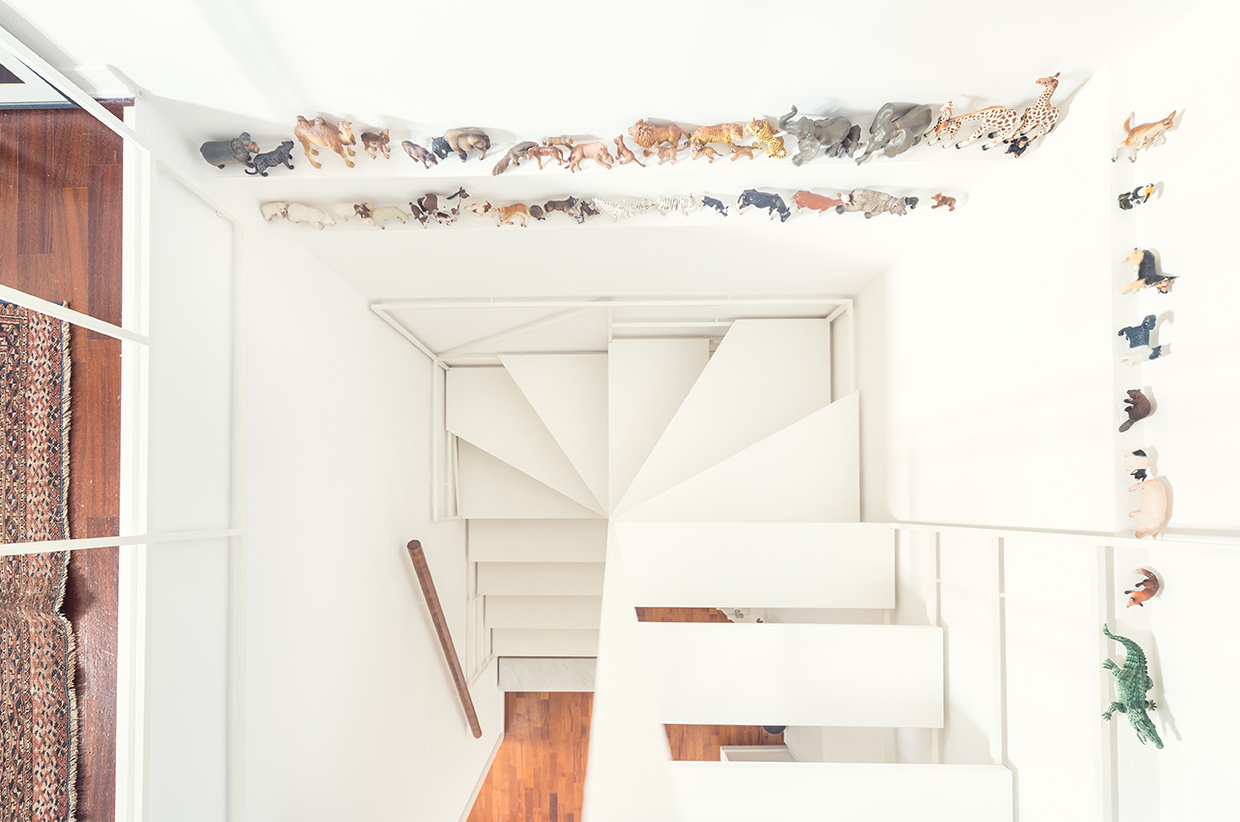The opportunity, repeated over a short but continuous span of time, to work on the routes of vertical circulation of a number of interiors has given the studio the chance to develop a specific approach to the construction of space in a coherent and experimental manner.
A clearly formulated theorem was interpreted in three variations, conditioned by very different geographical and social contexts. Operating within a “series”, in which the relationship of constants and variables is carefully calibrated, reveals the tectonic and environmental implications of the different designs.
Below we give the “programme” of questions to which the studio’s group of designers sought to respond in the development of the three projects.
Casa C, Milan, 2009-10
a) Can a staircase make the full height of a space evident?
b) Can a staircase contain all the movement of a rising body?
c) Can a staircase lead to the discovery of an internal panorama?
d) Can a staircase hierarchy?
Casa G, Cefalù, 2012-14
a) Can a staircase mediate ascent, dividing the vertical route into several sections?
b) Can a staircase speak of the triumph of the landscape?
c) Can a staircase intersect centuries of history?
d) Can a staircase be the synthesis of a multiple space?
e) Can a staircase have a complex structure in which the steps take the form of self-supporting blocks and the handrail creates structural frames on different layers?
Casa P, Milan, 2013-14
a) Can a staircase expand the area of an interior?
b) Can a staircase tell us that time passes and children grow up?
c) Can a staircase tell us when we are up that a down exists?
d) Can a staircase have a narrative scheme (intro – development – end) and a structural scheme that coincide?




